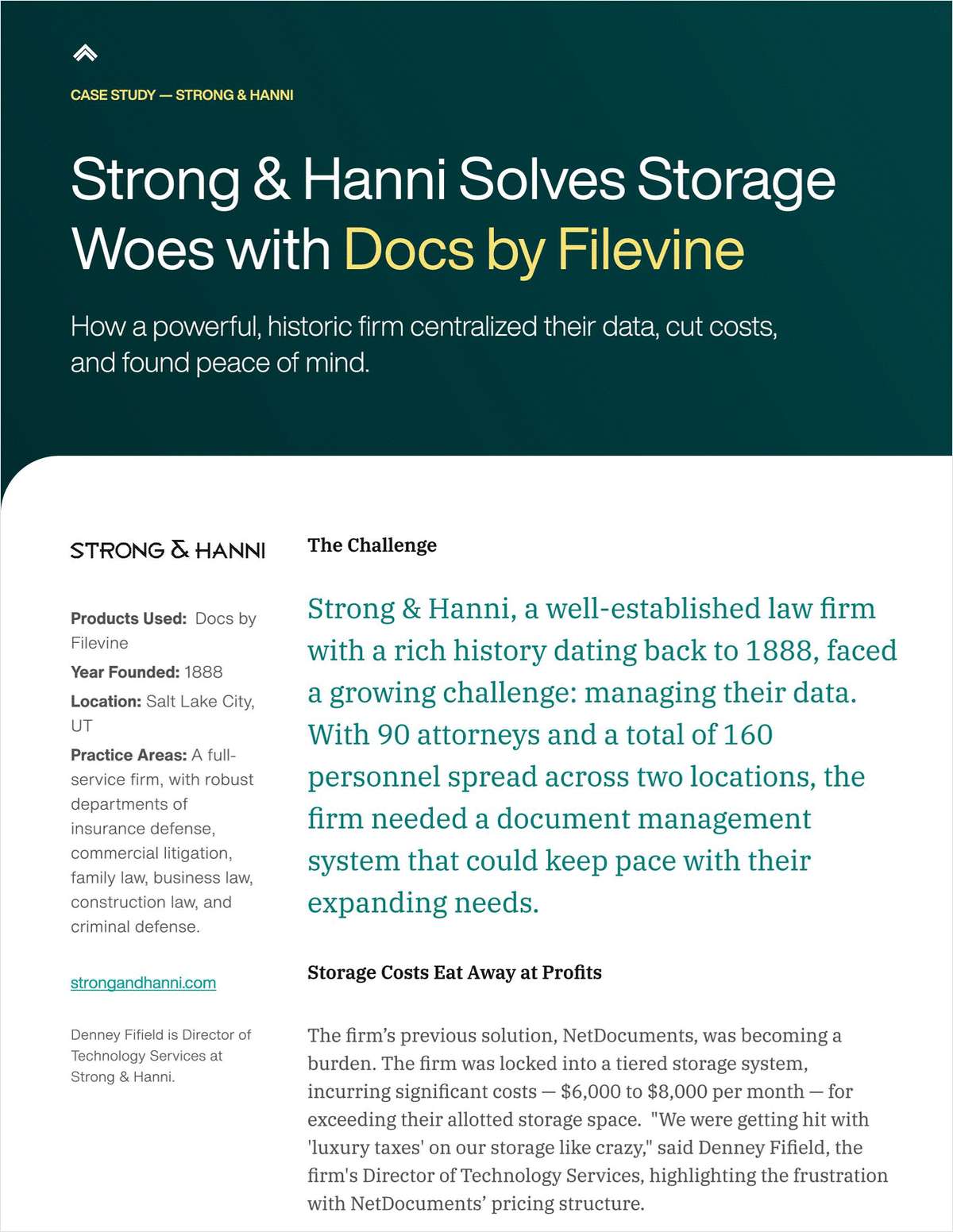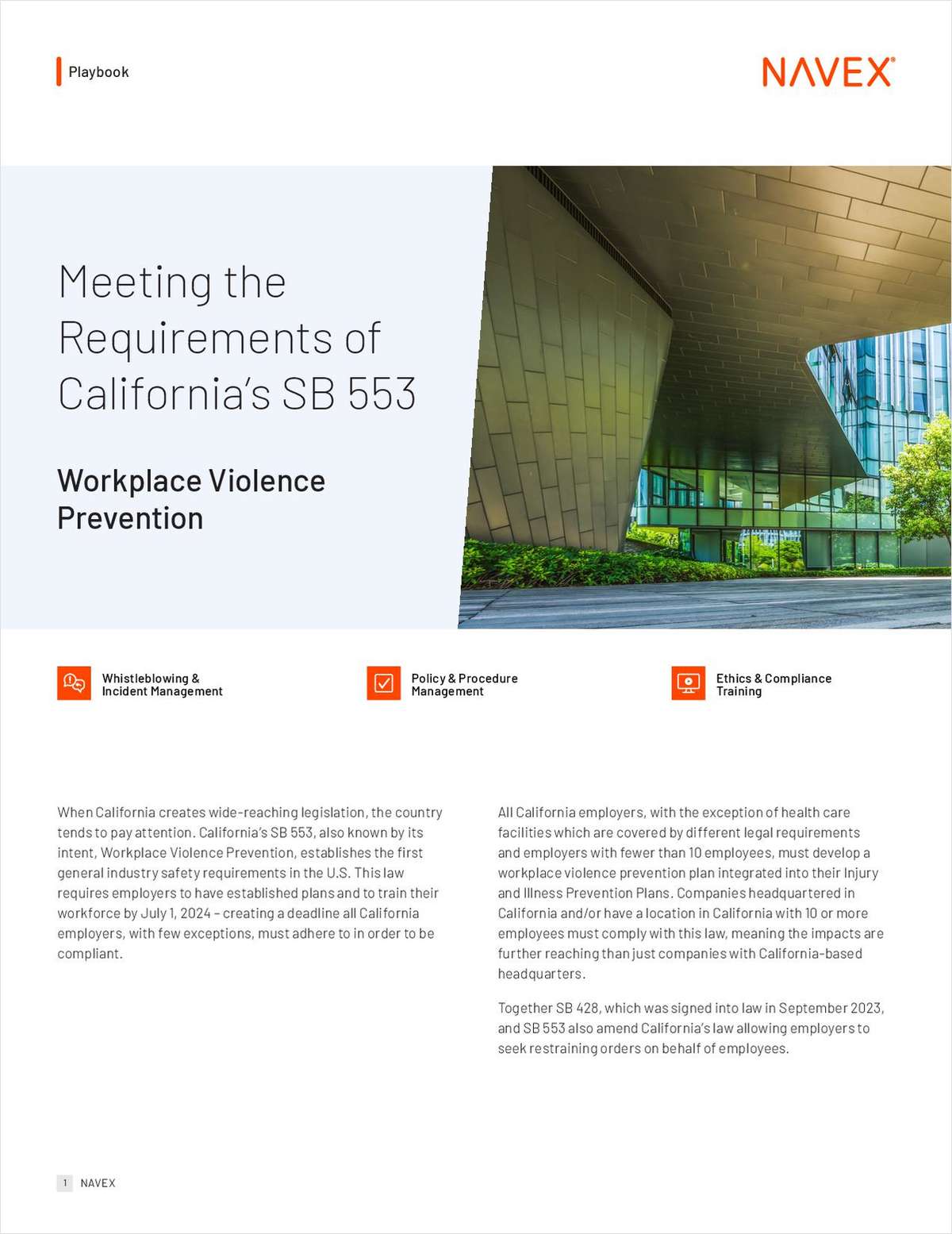 The Supreme Court heard an unprecedented six patent cases in its most recently concluded term. Between those decisions, and rulings from the Federal Circuit, it's clear the federal judiciary is willing to take the reins in attempting to clarify U.S. patent law in the wake of the America Invents Act. While it is encouraging to see the judiciary work the contours of our patent law, there is cause to be concerned with the excessive focus on subject matter eligibility, as outlined in Section 101 of the patent statute. Congress has declined to put limits on patentable subject matter for more than 200 years. And yet the judicial branch and the U.S. Patent and Trademark Office recently seem to have made Section 101 the issue for determining if a patent is valid, at times to the exclusion of all others. One might ask, if the patent claims are invalid, who cares if they are scrapped because they are not eligible subject matter (101) versus if they lack novelty (102), are too obvious (103) or are too open-ended or unclear (112)? If we're concerned for the overarching purpose of the patent system—incentivizing invention—it matters a lot. How we adjudicate patent disputes necessarily determines where inventors and companies make substantial investment in innovation—and where they will invest less. Overreliance by the judiciary and the USPTO on Section 101 blunts the incentivizing purpose of patent protection and deters investment across broad categories of industry. When courts and the USPTO take the “I know it when I see it” approach to Section 101 jurisprudence, businesspeople, investors and innovators will allocate resources away from innovation in those industries that are perceived to fall on the wrong side of the fence. This shift occurs even when legal standards merely raise questions or cause uncertainty, forcing future investment and development into only “safe” subject matter areas. What suffers are those vital inventions that, precisely because they are at the frontiers of technology, are difficult to define in familiar terms and therefore particularly susceptible to being labeled “abstract”. The case law in this area has seen a great deal of change and attention in recent years, further complicating the investment decisions of business leaders. For patent holders, perhaps the most impactful Supreme Court patent decision of last term has proven to be Alice v. CLS Bank. Building on 2013's Association for Molecular Pathology v. Myriad Genetics, and 2012's Mayo Collaborative Services v. Prometheus Labs, the basic holding itself—that operating a [well-known?] financial or economic process on a generalized computer does not transform an otherwise abstract idea into a patentable invention—was far from earth-shattering. However, lower courts and the USPTO seem to have interpreted Alice as a call to fundamentally realign their priorities, and make sure that subject matter eligibility is the test in patent challenges. Essentially, what has always been a very coarse filter is now doing the sort of fine-grained work more appropriately performed by Sections 102, 103 and 112. This is occurring despite Alice's express warning to “tread carefully” in construing Section 101's exclusionary principle “lest it swallow all of patent law.” Unfortunately that's not happening. According to Lex Machina, in 2013 fewer than 20 patents were invalidated on 101 grounds but in 2014, Section 101 became the primary basis for invalidity with about 50 patents being invalidated as ineligible. The recently decided University of Utah Research v. Ambry Genetics provides an example of this trend. In its decision, the Federal Circuit relied on a combination of Myriad and Alice to invalidate claims to synthetically created primers used to sequence genes and associated methods of determining a patient's cancer risk. The opinion at one point described the claimed method as a conventional activity that did “nothing more than spell out what practitioners already knew.” This is a rebuke referencing language typically associated with novelty and/or obviousness, not subject matter eligibility. The courts also seem to be conflating 'known' with 'conventional'. According the Supreme Court, the question is not whether the claims did more than “spell out what practitioners already knew,” but whether they consist of more than 'routine' activities widely performed. In other words, to be conventional, it must be known—but also generally accepted or prevalent. The decision exemplifies the uncertainty on 101 issues as well as the trend of putting the Section 101 cart before the Section 102 and 103 horses, unnecessarily casting doubt over the patent eligibility of discoveries in the life sciences and information technology generally. One way to curb this trend before it creates lasting damage is for the courts and the USPTO to instead apply the more precise provisions of the Patent Act ahead of Section 101 wherever they are applicable. And rejections under those better suited provisions will virtually always be applicable where there is an opportunity for a Section 101 rejection. In fact, it can be asserted that if a court or the USPTO makes a Section 101 ruling without making a ruling under Sections 102, 103 or 112 (and often under all three), or if examiners are not reviewing applications under all statutory sections as required, they are presumptively missing issues. While the greatest concern for inventors is having meritorious applications invalidated without analysis, backing off from the current fixation on Section 101 does not mean significantly fewer findings of invalidity—it simply means findings of invalidity that would provide more meaningful guidance to innovators. Additionally, it would be helpful if the Federal Circuit were to issue a decision that provided sufficient guidance to lower courts and the USPTO on how to properly apply the 101 test, effectively ending the “know it when I see it” standard. Take the Federal Circuit's recent finding of invalidity in Planet Bingo v. VKGS, involving computer-aided management of the game “Bingo.” The Federal Circuit relied on the two-part test for abstractness posited in Alice to rule the patent invalid on Section 101 grounds. But the facts of the case suggest invalidity might have been found just as easily (and more helpfully) by relying on Sections 102 or 103. In finding no inventive concept, the opinion quotes directly from Alice, stating that “the function performed by the computer at each step of the process is purely conventional.” And what of Section 112? The stated concern driving the exclusionary principle provided by Section 101 is that patent law not inhibit discovery by granting monopolies over the “building blocks of human ingenuity.” This is a legitimate concern, but one that is better addressed through rigorous enforcement of Section 112 rather than Section 101. The Supreme Court's recent Nautilus v. Biosig decision provides courts and the USPTO the opportunity to fashion a meaningful tool for reining in overbroad claims that risk impeding future discovery. In this area, the Federal Circuit has already shown signs of a post-Nautilus Section 112 revitalization. The danger of overbroad patents is very real, and has a negative impact on innovation. We must now take care to address another risk to innovation: that discriminatory jurisprudence will lead to a lack of faith in the patent system's ability to protect certain categories of innovation, sapping investment in the very fields that hold the most promise of propelling us toward the exciting discoveries of tomorrow. No branches of government have ever engaged in the sort of categorical discrimination that the recent surge in Section 101 jurisprudence so precariously invites—so the question is this: why start now? David Kappos, the former director of the U.S. Patent and Trademark Office, is a senior adviser for the Partnership for American Innovation. | 












